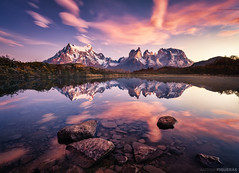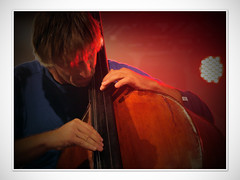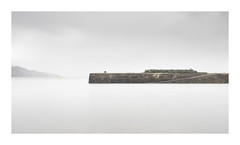by Jack D. Elliott, Jr.
I. Introduction
The greatest potential of historic preservation isn’t merely in temporarily saving a vast potpourri of old buildings and sites from the inexorable ravages of time. Instead, in recalling the significance of the past, we potentially dip into a great reservoir of personal and collective experience. The term significance — or meaning — recalls the symbolic dimensions of the past where words and images, good and evil, facts and mystery interplay in memory. This stands in contrast to the modern, narrower emphasis on the empirical and material.
Despite the current focus on preserving old things and information, an occasionally recalled intuition hints that preservation is about more. Richard Moe writes that historic places help us understand “who we are, where we came from, and what is the legacy that shapes . . . us.” Or a preservation film similarly tells us that historic places ask the questions: “Who are we? Where do we come from? And, where are we going?”
We might also recall the book, With Heritage So Rich (1966), a key factor in the passage of the National Historic Preservation Act. Its authors warned against placing too much emphasis on merely “saving bricks and mortar,” of becoming “a cult of antiquarians”; instead they said preservation must “give a sense of orientation to our society, using structures and objects of the past to establish values of time and place.” The practice of historic preservation, then, is — or should be — a deeply and richly philosophical experience.
One would think there would be more emphasis on such questions. Yet as we spend more and more money on preservation, are we encouraging reflection on them or are we simply saving bricks and mortar?
As modern society emphasizes scientific methods as the only canon of truth and education as job training, we grow increasingly incapable of understanding that which isn’t empirical. We marginalize what doesn’t increase production. The shards of the past increasingly become little more than curiosities to be collected and displayed.
Preservation implies more than merely saving old stuff. It implies a consciousness of our role within the larger context of life which includes community, the past, and nature. However, understanding these concerns requires not objective study but reflection on remembered experience — both our own and those of the greater tradition — and the ability to communicate this to the public.
II. A Remembrance
As a child I loved to explore the prairies around my home. It was an exercise in wonder. There were gullies cut into chalk beds covered with the bleached fossils of a vanished sea. Elsewhere were places where I found stone tools and pottery shards left by nameless Indians from centuries past. I couldn’t dig in my yard without finding more recent artifacts — pottery, glass, rusty nails. I discovered that my home was on the site of an extinct town known as Palo Alto. It had been founded by my ancestors in the 1840s. I still recall walking along a sunken roadbed and in my mind I could see the scene from long ago, of a street lined with stores and houses and filled with mules and people.
My own experience interlaced with family, community, and history, and I found myself at the center of an interconnected web of associations. My knowledge of the past was not merely about facts and material things, but also a symbolic process through which much more was revealed. It linked my present to the past and pointed to the future. Pervading all was a sense of wonder and beauty, of something partially but never fully disclosed, of something transcendent that tantalized and inspired. Loren Eiseley pointed to similar experiences which had “led [W.H.] Hudson to glimpse eternity in some old men’s faces at Land’s End” and which had “led Thoreau to see human civilizations as toadstools sprung up in the night by solitary roads.”
When I later learned to study the past through scholarly methods, I immediately sensed that there was something more than the methods could capture. My suspicions were confirmed by the physicist, Niels Bohr, and his recollection of Kronberg Castle, home of the historical Prince Hamlet:
Isn’t it strange how this castle changes as soon as one imagines that Hamlet lived here? As scientists, we believe that a castle consists only of stones and admire the way the architect puts them together . . . . None of this should be changed by the fact that Hamlet lived here, and yet it is changed completely. Suddenly the walls and the ramparts speak a different language . . . everyone knows the questions Shakespeare had [Hamlet] ask, the human depths he was made to reveal . . . .
Here history and place aren’t so much objects of study, as part of a dynamic whole in which one consciously perceives and responds to something that transcends. The “human depths” encountered bring us into the realm of the questions that lie at the basis of historic preservation: who are we, where did we come from, and where are we going?
III. First Principles
For the Greeks, memory was the path to recollecting first principles, the basics of life which we take for granted. Such reflection is driven by questioning wonder that leads beyond the everydayness of life. They called this wisdom — or love of wisdom. As John Burnet pointed out in his study of Greek thought: “Wisdom is not a knowledge of many things, but the perception of the underlying unity [of seemingly unrelated facts].”
This underlying unity includes far more than material objects. It also includes the conscious processes that reveal the order of the world. This order is symbolically mediated and includes the range from empirical facts to symbols, values and qualities. Life and history are symbolically mediated to us.
1. History is symbolically mediated. History isn’t experienced directly. We can no more see five seconds into the past than we can five years. As St. Augustine pointed out, our experience is always from the infinitesimally small realm we call the present — the eternal present. From this perspective the past is recalled, remembered, through complex symbolic processes. The past is effectively all that we can know, while the future is known through anticipation
2. History has a mythic dimension. The symbols of the past aren’t simply facts. They potentially have a mythic quality. By myth I don’t mean fiction. It is the symbolic form through which aspects of life are presented, questions of origins and identity, not least being the recognition that behind the order of the world lies a mystery beyond comprehension — the mystery of being — why do we exist rather than not exist?
Augustine meditatively explored the relationship between the accumulation of images from the past and the ideals available to humans. He saw the past of memory and the future of anticipation as integral parts of present experience, with the past serving as an inner teacher that provides imperfect images of more transcendent goals. This interplay of past and future, object and value, experience and symbol, was nicely captured by Robert S. Dupree: “The shards of the past are both remembrances and foreshadowings of the community that resides in human hope and the spirit, [they are] the sacrament of community.”
3. History is personally formative.
The past plays a formative role in our personal existence whether we recognize it or not. This realization is behind the traditional concerns with personal formation (whether they be Confucian learning or Greek paideia) that is the cultivation of virtues such as wisdom and pietas through exposure to insights and symbols from the past.
Because historic preservation is concerned with the symbolism of history and questions pertaining to basic principles, it would not be far off mark to say that it has a stake in encouraging these virtues. This would necessarily involve raising horizons of understanding and moral concern, effecting personal transformation through exposure to symbols from the past.
Closely related to wisdom is the virtue of pietas, or piety, which shouldn’t be confused with the way the term is often used today. A spirit of pietas is a respect for nature, other people, and the past, respect growing out of the knowledge that they represent a larger community of being to which we owe our existence and our responsibility. Richard Weaver described pietas as a “lost power or lost capacity for wonder and enchantment.”
Wisdom and pietas are concerned with transcendental values — the True, the Good, and the Beautiful. According to Freeman Tilden in his wise little book, Interpreting Our Heritage, Beauty is the key to understanding the need to preserve, because Beauty is the call of wonder, the call toward something beyond, the guide toward the True and the Good. He wrote that it is “the path along which our quest for understanding must go. Surely we deal with an essence that is beyond our powers of expression. But we can, and we do, feel its reality.”
This sketches out the key concerns of preservation. Beyond simply saving bricks and mortar, it is a call to roots, to first principles, to the understanding that there are wholes in which we participate. It is a call to broader horizons of understanding and moral concern. It is the recovery of a direction — however poorly understood — that contrasts with the dominant direction of the modern world toward fragmentation and specialization. It is a call to wonder and wisdom.
IV. Three Contradictions
I note a tension between the implied goals of historic preservation and the direction of the modern world. This tension highlights both the potential and the problems within preservation which I’ll summarize as three contradictions:
A. Historic preservation asserts the value of history while the modern trend has been to reject the past in favor of an all important present.
Beginning with the Enlightenment and afterward, the West has often demonized the past as a place of darkness — something to be repudiated, rather than recognized as the source of human experience and insight. The call for “building new by destroying the past” echoes through modern history from Urban Renewal to Le Corbusier to the Chinese Cultural Revolution, all marching toward garish utopias dominated by stark, nightmarish forms.
B. Historic preservation implicitly asserts a non-positivistic interpretation of history while modern education and disciplines are dominated by positivistic methods.
Modern movements assert that the only legitimate knowledge is based on science. We call this positivism or scientism. The question of significance comprehends and transcends positivism because scientific methods say nothing about the meaning of history and place.
C. While historic preservation implicitly asserts the significance of history, it is supported by institutions based on a poor understanding of this concern which in practice tend to subvert it.
This is because its professionals and regulations are heavily influenced by the dominant positivism. Questions that transcend positivistic methods are incomprehensible and consequently irrelevant. The focus shifts to that which can be comprehended, namely surveying, and recording and maintaining, and promoting, and funding. Foundational concerns — if anyone has the audacity to raise them — are regarded as a potential embarrassment and even a threat, as I have discovered.
I once attempted to recall basic principles in an introduction to our state’s comprehensive plan. I assumed that minimally it might generate constructive dialogue. The reception however was less than positive. I was told that we were only required to follow the «regs»; we were not required to think about them. In other words, preservationists are “not paid to think.” This implies that the ideal is to act uncritically — and therefore irresponsibly.
With this prohibition against thinking, the task of recovering the symbolic depths of experience on which preservation is based was deemed irrelevant. I suspect that such a view is far too common. If so, the public outreach of preservation does little toward raising levels of understanding. As Jacques Barzun has observed, although there is “more and more cultural stuff to house, classify, docket, consult, and teach . . . culture . . . is declining. It is doing so virtually in proportion as the various cultural endeavors — all this collecting and exhibiting and performing and encouraging — grow and spread with well-meant public and private support.”
V. Conclusion
Historically the preservation and dissemination of culture have been concerned with wisdom — raising the horizons of understanding and moral concern. However, today these goals are hardly acknowledged or comprehended as the result of modern society’s fixation on empirical methods and specialized knowledge for the sake of producing information and commodities. It seems almost obvious that preservation with its implicit focus on matters of meaning and its recognition of the value of the past should find its ultimate potential in recalling those first principles of life that are so often marginalized if not forgotten.
This potential can only be realized through maintaining a constant dialogue with and critical appropriation of insights from the past. Preservationists should be able to awaken pietas, an awareness of our relationship to history, place, and community and their formative role in our lives and understanding. The landscape and its relic features should not be perceived as merely matter but as a source of beauty and wonder. We must learn, following Niels Bohr, that “the walls and ramparts [can] speak a different language” that can reveal “human depths”: in particular they point to the foundational questions of preservation: who are we, where did we come from, and where are we going?
This paper was presented at the Saving Places Conference, held in Denver, Colorado on February 5th, 2010, in the session entitled: “Heritage, Significance and Social and Cultural Sustainability.”
Jack D. Elliott, Jr. is an Historical Archaeologist for the State of Mississippi and an Archaelolgy Lecturer at Mississippi State University. He is the Moderator of the evforum listserv and the Moderator of the new evforum online forum here at VoegelinView. His biographical sketch at VoegelinView may be seen HERE.
4.850000
-74.050000
Etiquetas: history, political science, principios éticos y morales, principles








